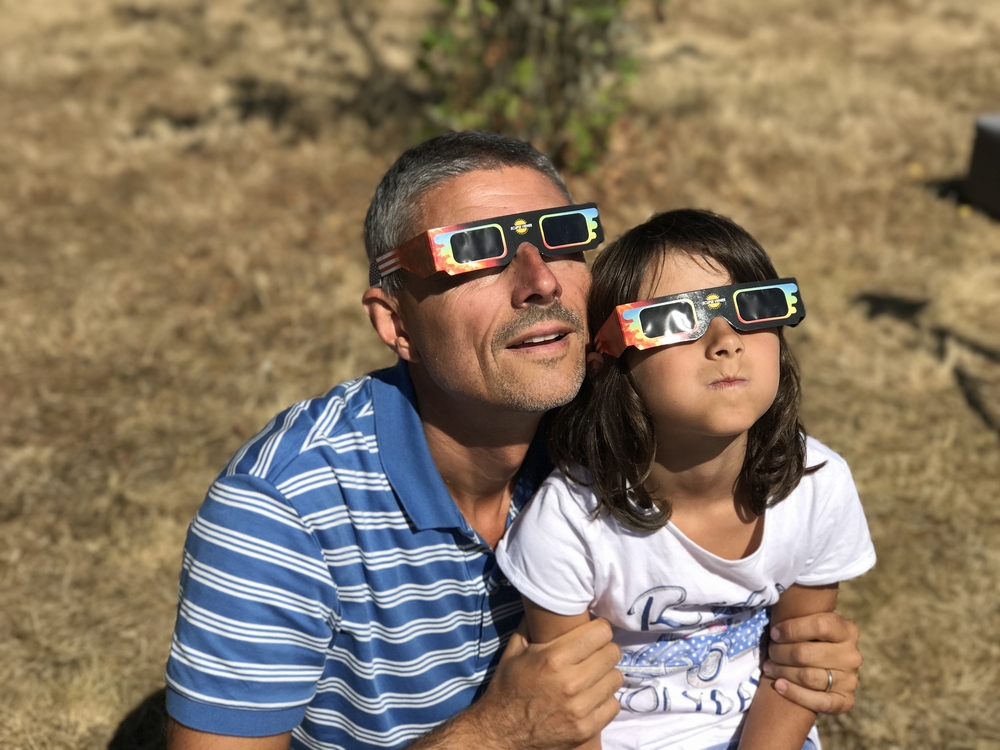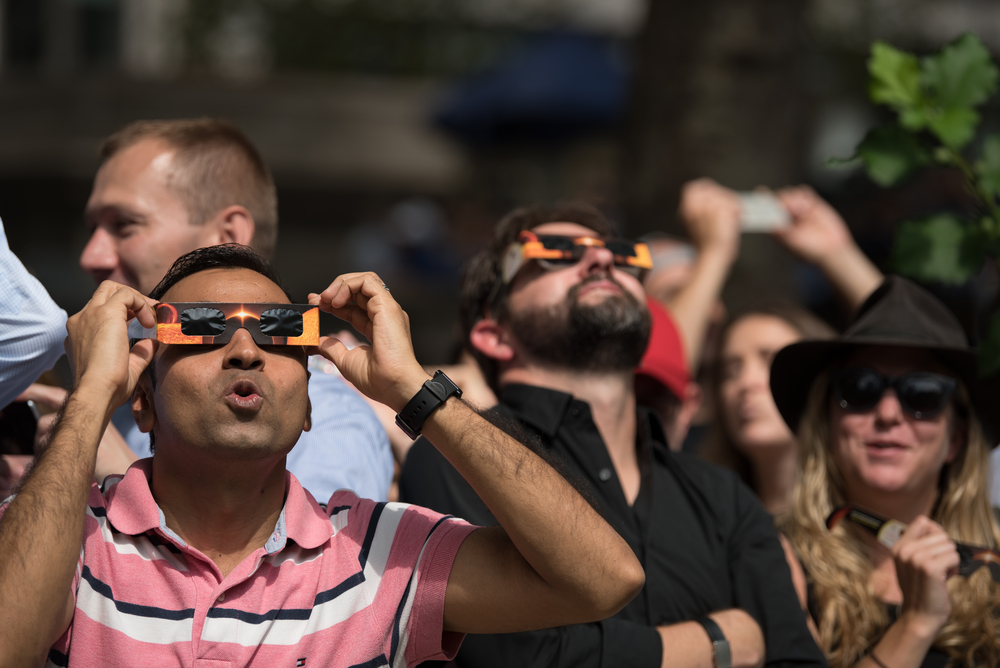Massive Sunspot 4 Times the Size of Earth Is Now Visible—Here’s How to See It

Since it’s the one thing we see literally every day, it can be hard to remember that the sun can sometimes be the centerpiece of some pretty unique astronomical events. Of course, the excitement of catching a total solar eclipse is usually the first thing to come to mind for most people. But now, there’s another reason to look up as scientists have announced a massive sunspot roughly four times the size of Earth that’s currently visible to sky gazers. Read on for more information on how you can see it safely.
READ THIS NEXT: 5 Amazing Things You Can See in the Night Sky This June.
An enormous sunspot is now visible to people on Earth.

Amateur skywatchers hoping to catch a glimpse of a unique solar event should take note. According to astronomers, a massive sunspot is currently making its way across the center of our solar system, Space.com reports. The phenomenon—which has been designated as AR3310—is presently near the edge of the visible plane of the sun and could be about to rotate out of view.
While sunspots can appear regularly in specialized photography, AR3310 is stunning amateur astronomers worldwide due to its sheer size. In a May 22 Instagram post, South Korean astronomer Bum-Suk Yeom used a NASA image to point out that the spot is roughly four times the size of Earth.
The phenomenon is caused by strong magnetic fields and can create solar flares.

According to NASA, sunspots are visibly dark spots on the sun’s surface caused by the star’s constantly shifting magnetic fields that lead to sudden cooling in certain areas. The space agency says that moderately-sized sunspots are about the same size as our planet—showing how large AR3310 is by comparison—and typically dissipate over a few days or weeks.
The phenomenon has also developed just as the sun has recently ramped up its activity as it approaches its “solar maximum” sometime around 2025. The past 300 years of records have shown sunspots tend to wax and wane along with these 11-year cycles, per NASA.
Notably, large sunspots often cause solar flares, which can send charged particles hurtling toward Earth. These events can then affect our planet with electrical grids or telecommunications and increase the strength of natural phenomena like the Northern Lights.
RELATED: For more up-to-date information, sign up for our daily newsletter.
You won’t need a telescope to see the sunspot—but you need one essential piece of safety equipment.

While the passage of AR3310 across the sun is a notable event that doesn’t require a telescope to see, experts are immediately warning anyone trying to catch a glimpse that they should never look directly at the sun. In fact, even quick glimpses of the star without protection can cause permanent damage, according to Space.com.
Fortunately, you can still see the spot safely if you’ve managed to hold on to one particular piece of equipment since the last solar eclipse. According to NASA, protective solar viewing glasses used for the event are actually handy for picking up the “freckles” sunspots create regularly.
Just be sure to check if the glasses are in good shape and that the filter hasn’t been scratched while in storage. Any damaged pairs should be thrown away immediately, according to the American Astronomical Society (AAS). And while they may help keep the glare out of your eyes, everyday sunglasses do not offer the kind of protection you need to look directly at the sun, so they shouldn’t be used.
Here’s the safest way to catch a glimpse of the massive sunspot.

Once you have the protective glasses or special binoculars needed to view the sun directly, there are still a few tips to keep in mind to avoid injury. Start by covering your eyes with the filter before you even look up into the sky while also being sure to look away from the sun again before removing them, the AAS suggests. In addition, those who wear glasses for eyesight should be sure to wear protective solar glasses over them while looking at the sun.
And while special solar filter glasses may fit just like a regular pair of sunglasses, you should still take care to hold them in place to make sure they don’t accidentally fall off, Space.com suggests. You can help keep them in place by pressing the temples against the side of your head while gazing above.